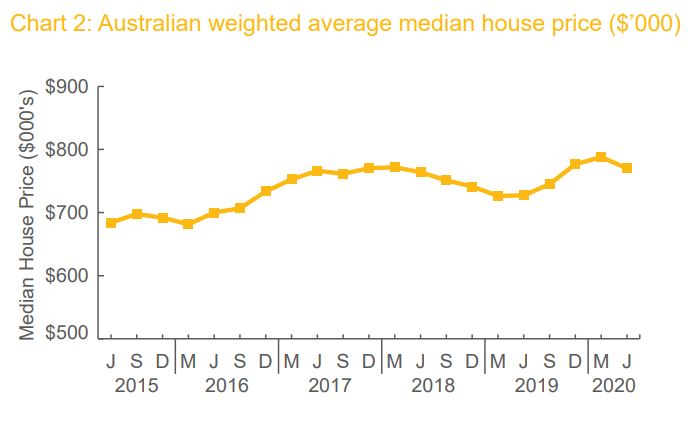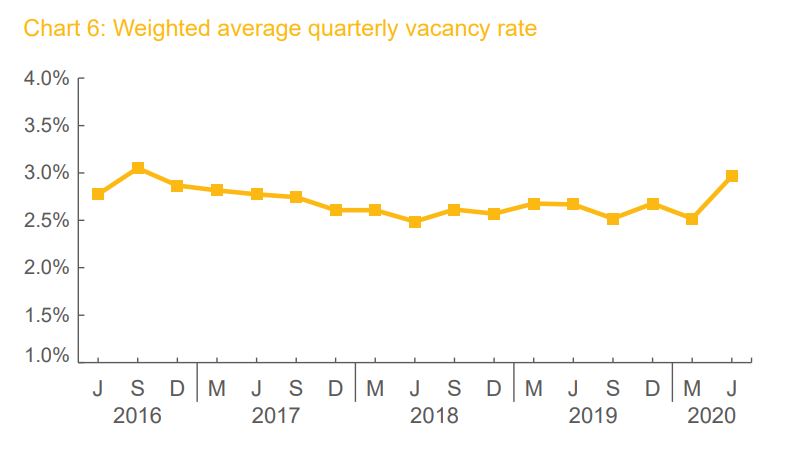Pandemic impacts not as dramatic as predicted: REIA
Contact
Pandemic impacts not as dramatic as predicted: REIA
The quarterly Real Estate Market Facts report from the REIA is not all doom and gloom, says REIA president Adrian Kelly.
The Real Estate Market Facts quarterly report for June 2020 has shown an impact on prices from the COVID-19 pandemic, but it has not been as dramatic as some have predicted.
“In the March edition I flagged that June quarter 2020 will reflect the impacts of the start of the COVID-19 pandemic on both the sales and rental markets,” said REIA president Adrian Kelly.
“Whilst there has been an impact on prices it is relatively modest and has certainly not been the doomsday prophesies some commentators expected.
“Nor has the impact been uniform across Australia with local market conditions varying, resulting in a range of outcomes.”
At a Glance:
- The weighted average median price for houses for the eight capital cities decreased by 2.2 per cent to $770,359 over the quarter
- For the year the weighted average median price for houses for the eight capital cities increased by 5.9 per cent
- The weighted average median price for other dwellings also decreased by 1.9 per cent to $592,415 over the quarter
Source: REIA
This REMF edition shows in the June quarter 2020 the weighted average median price for houses for the eight capital cities decreased by 2.2 per cent to $770,359, with only Darwin having an increase and Adelaide remaining stable.
This is the first quarterly decrease since March 2019.
For the year the weighted average median price for houses for the eight capital cities increased by 5.9 per cent.
Source: REIA
The weighted average median price for other dwellings also decreased by 1.9 per cent to $592,415 over the quarter, with only Adelaide and Hobart recording increases.
For the year the weighted average median price for houses for the eight capital cities increased by 4.8 per cent.
Source: REIA
Over the quarter, the median rent for three-bedroom houses decreased in all capital cities except for Canberra, where there was a marginal increase, and Sydney where the rent remained stable.
The decrease in median rents for 3 bedroom houses, over the quarter, was 1.6 per cent.
There is a consistent pattern for June quarter median rents to decline and the 2020 decline cannot be attributed entirely to the impact of COVID-19.
Indeed the quarterly decline is below the June 2018 decline of 2.5 per cent.
The median rent for two-bedroom other dwellings decreased in all capital cities except Darwin, which had a 1.7 per cent increase.
The largest decline was in Melbourne, and at 8.7 per cent it's the largest decline in the past 10 years.
Source: REIA
The weighted average vacancy rate for the eight capital cities decreased to 3 per cent during the June quarter, which shows a loosening in the market compared to last quarter.
“A factor contributing to the market stability is the decline in the number of listings for sale,” said Mr Kelly.
“In all capital cities except Perth the number of houses and other dwellings for sale declined compared to the June quarter 2019.
“The biggest declines were in Hobart where the number of houses for sale declined by 33 per cent and the number of other dwellings by 26 per cent.
“The market is holding up better than many expected with the Government’s initiatives of JobKeeper and JobSeeker as well as the banks loan deferrals playing their part in stabilising the situation.
“With extensions to these having been announced we expect continued stability in the market.”
To sign up for the REIA reports click here.
Similar to this:
House prices have increased according to latest REMF
Adelaide only capital city to experience house and other dwelling growth in March quarter - REIA
House prices continuing to fall with Canberra the most affected









